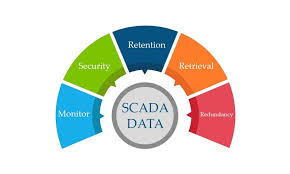Data Collection, Storage, and Retrieval Methods:
- Data Collection:
- Surveys and Questionnaires: Surveys and questionnaires are commonly used to collect data directly from individuals or organizations. They can be conducted in person, through phone calls, or online.
- Interviews: Interviews involve direct interaction with individuals or groups to gather specific information. They can be structured, semi-structured, or unstructured.
- Observations: Observational methods involve observing and recording data about behaviors, events, or processes in real-time. This can be done through direct observation or by using sensors and monitoring devices.
- Web Scraping: Web scraping involves extracting data from websites by automated means. It typically involves parsing HTML or using APIs to retrieve data from web services.
- Sensor Data: Sensors and IoT devices collect data from physical environments, such as temperature, pressure, or motion. This data can be used for various applications, including environmental monitoring or industrial automation.
- Data Storage:
- Relational Databases: Relational databases, such as MySQL, PostgreSQL, or Oracle, store data in structured tables with predefined schemas. They provide efficient storage, querying, and data integrity mechanisms.
- NoSQL Databases: NoSQL databases, like MongoDB, Cassandra, or Redis, are used for storing unstructured or semi-structured data. They offer flexibility, scalability, and high-performance for handling large volumes of data.
- Data Warehouses: Data warehouses are specialized databases designed for analytical purposes. They consolidate data from multiple sources, optimize query performance, and support complex data analysis.
- Data Lakes: Data lakes are large repositories that store raw, unprocessed data in its native format. They provide a central storage location for structured, semi-structured, and unstructured data, enabling flexible analysis.
- Cloud Storage: Cloud storage services, such as Amazon S3, Google Cloud Storage, or Microsoft Azure Blob Storage, offer scalable and cost-effective solutions for storing large volumes of data in the cloud.
- Data Retrieval:
- SQL Queries: Structured Query Language (SQL) is used to retrieve data from relational databases. It allows users to specify conditions, join tables, and aggregate data to retrieve specific information.
- API Calls: Many applications and services provide APIs (Application Programming Interfaces) that allow developers to retrieve data programmatically. APIs enable data retrieval from various sources, including social media platforms, weather services, or financial data providers.
- Data Warehouse Queries: Data warehouses provide specialized query languages, such as SQL extensions or OLAP (Online Analytical Processing) tools, to retrieve and analyze data efficiently for reporting and analytics purposes.
- Search Engines: Search engines enable users to retrieve information from vast collections of web pages or documents. They use algorithms to index and rank data based on relevance to user queries.
- Data Visualization Tools: Data visualization tools, like Tableau, Power BI, or matplotlib, allow users to retrieve and visualize data in interactive and meaningful ways. They provide visual representations of data for exploration and analysis.
Effective data collection, storage, and retrieval methods depend on the specific requirements, data types, and scalability needs of an organization. Choosing the appropriate methods and technologies is crucial to ensure efficient data management and retrieval for analysis and decision making.
SHARE
